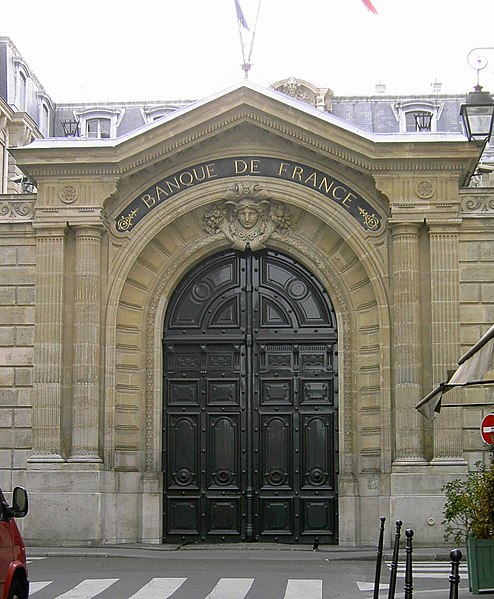It’s Christmas Eve today! To celebrate the season, allow me to indulge in a departure from the usual format of this blog by conducting a thought experiment.

In the English carol “The Twelve Days of Christmas”, a lover showers their beloved with a series of lavish gifts, ranging from jewellery, through livestock, to enslaved aristocrats. What if this story came true in Paris? What would that mean for the city and for France? Let’s find out…
How many Parisians have a “true love”?
Around 49% of French people report being in a relationship (2011, Insee). Assuming a similar share among Paris’s 2.2 million inhabitants (2016, Insee), that leaves just over 1.07 million people. Let’s round down to account for those who are in relationships, but not with their “true love”, to leave us with half a million couples, and let’s imagine that in every one of those couples, one person gifted all the treasures listed in the song to the other. Let’s also not forget that the gifts accumulate as the days roll on, meaning that by Twelfth Night, each lucky partner would have received 12 partridges, 2 × 11 = 22 turtle doves, 3 × 10 = 30 French hens, and so on. What would the end result look like?
6 million partridges in 6 million pear trees
According to this fruit tree seller, the European pear tree requires a spacing of at least 6 metres between trees, with 9 metres between each row. Assuming 1000 rows of 6000 trees, this would require some 324 square kilometres of orchard. This is more than three times the area of Paris, including the bois de Boulogne and the bois de Vincennes. Sourcing the birds would be no mean feat either: the breed isn’t specified, but if the partridge of choice were the grey partridge (Perdix perdix) then this 6 million would represent the entire European breeding population. Then try to get them into the pear trees: they nest on the ground.
44 million assorted birds
To meet the requirements of our Parisian lovebirds’ generosity would require 11 million turtle doves, 15 million French hens and 18 million calling birds.

“Calling birds” is actually a corruption of “colly birds” – “colly” meaning “black” – so we can assume them to be blackbirds. There are at least 110 million of these in Europe, so sourcing 18 million might be theoretically possible. They’re currently listed as Least Concern, and the population is rising; but a mass forced migration into Paris could change that. France has enough hens for our sweethearts: French farmers raise 500 million chickens each year for meat and a further 47 million laying hens. But turtle doves pose more of a problem: they’re classified as vulnerable by the IUCN, and sourcing 11 million would more or less wipe them out: estimates suggest there could be as few as 19.3 million individuals left on the planet.
20 million gold rings
Assuming the rings in question are made of 14k gold and each weighs 5g, 20 million gold rings would require around 58 tonnes of gold, or the equivalent of 2.4% of the gold reserves of the Bank of France. At the time of writing, the gold alone would hold a value of around €2.5 billion.
France ranks 4th among the countries of the world for gold reserves, after the US, Germany and Italy. This gold can be found in vaults under the Bank’s headquarters in an hôtel particulier in the 1st arrondissement, near the Louvre and the Palais-Royal. This building, the Hôtel de Toulouse, was built in 1640 for Louis Phélypeaux, an aristocrat and politician, and once housed a collection of Italian art.

21 million adult female geese
Sourcing 21 million geese would be no easy task – especially since they have to be layers. Although France’s festive speciality of foie gras traditionally came from geese, today 97% is from ducks. In the Dordogne, one of the principal foie-gras producing departments, only 90 000 such geese are reared each year.
21 million waterborne swans
Taking all species together, there are only around 2 million swans in the world. So unfortunately for our lovebirds, this one again seems impossible. And that’s before we consider the space they would need to swim in.

20 million cows and 20 million milking staff
Since there are only 18.6 million cattle in France – covering meat and dairy – our sweethearts are going to find it difficult to find 20 million milk-producing cows. The maids themselves also pose a huge problem: there are only 885 000 agricultural workers in France, so we’d need to train over 19 million more. Since only 29.7 million people are currently defined as “active” (working or looking for work), this would represent a huge undertaking.
18 million ladies and 15 million lords
In the French revolution, lordships were abolished. As such, no true lords still exist in France. Some 100 000 people can still claim noble heritage, but this would barely make a dent in the required figure of 33 million. Even across the Channel in the UK, there are only 814 hereditary and 679 life peers (plus 26 Lords temporal); if we expand the definition to include their families (not, properly speaking, lords) this still only gives a number in the thousands rather than the millions.
For these verses of the song to come true, we would need to interpret “ladies dancing” and “lords a-leaping” as poetic terms for dancers. Unfortunately, these probably number only in the hundreds of thousands in France, so a recruitment drive would be needed to convert France’s provincial workforce to this field. Let’s say we allow (or rather, force) our dairy staff to moonlight as dancers – we’d still have a shortfall of 3.3 million. We’d therefore have to pull some of France’s 16.1 million pensioners out of retirement. As we can see from the ongoing strikes across the country, this wouldn’t go down well.

11 million pipers and 6 million drummers
By this point, you know the drill. France is home to only 25 000 professional musicians, so we’d need to train half of our staff to perform alongside their duties as dancers and milking staff. At this point we’re at risk of breaking employment law by overworking these poor souls – but since we’ve already forced them to change profession and taken them as slaves, I suppose that ship has sailed.
Conclusion: not just a nightmare – an impossibility
As anybody could have told me before I embarked on this ridiculous thought experiment, this would be a very, very bad idea. What I hadn’t realised is that it would be literally impossible – even assuming we could enslave this many people – thanks to the shortage of geese and swans.

Merry Christmas, and see you next week for a less bizarre article in which we look back at the changes in Paris’s infrastructure over the last decade.
 Fabric of Paris
Fabric of Paris